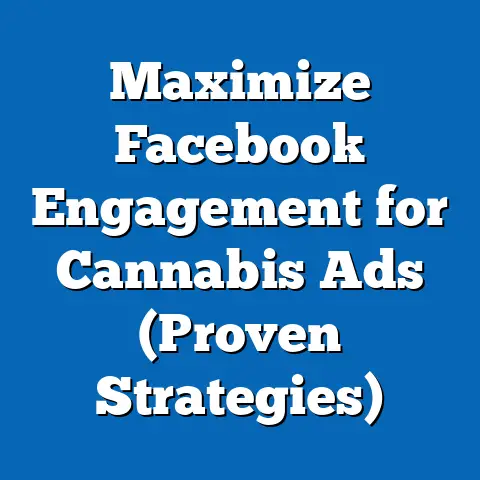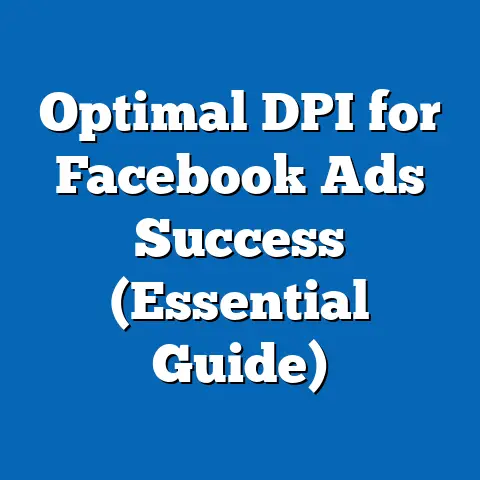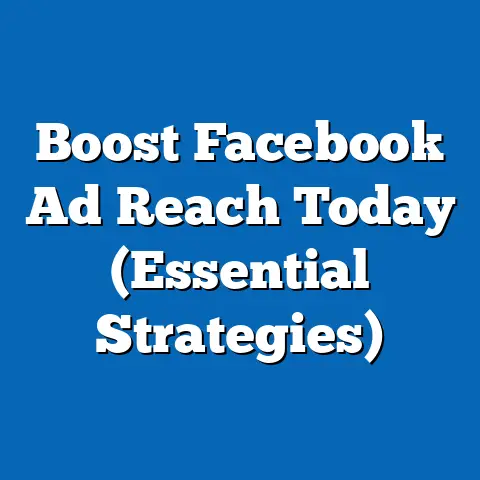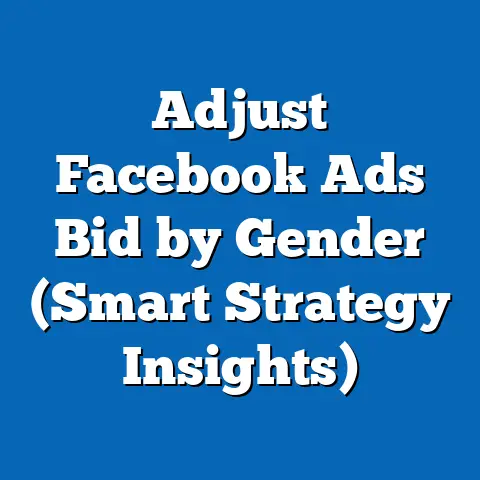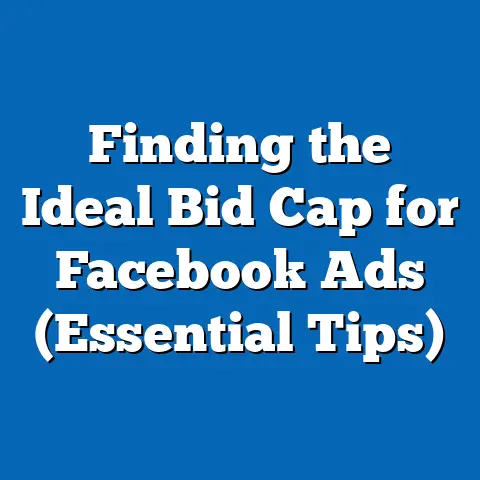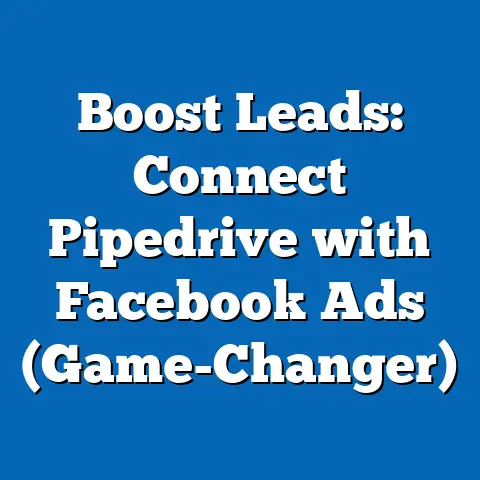Beat Facebook Adblock on iPhone (Savvy Strategies Revealed)
Facebook, the behemoth of social media, continues to be a vital platform for businesses seeking to connect with their target audience. But as advertisers, we’ve all felt the sting of ad blockers, especially on mobile devices like iPhones. It’s like setting up a beautiful storefront only to find that potential customers are wearing blinders as they walk by.
For years, I’ve navigated the ever-changing landscape of digital advertising, and one constant challenge has been the rise of ad blockers. The frustration is real: you invest time, money, and effort into crafting compelling ads, only to have them disappear before they even reach your intended audience. On iPhones, where users are particularly savvy and protective of their online experience, the problem is magnified. This article isn’t just about complaining; it’s about providing actionable solutions.
Understanding Facebook Adblock
Before we can strategize on how to overcome Facebook adblock on iPhones, it’s crucial to understand exactly what we’re up against. Ad blocking isn’t just a singular phenomenon; it’s a complex ecosystem of software and user behaviors designed to filter out unwanted advertisements. On iPhones, this takes on a specific form, integrating seamlessly with the device’s operating system and user preferences.
What is Facebook Adblock?
Facebook adblock refers to the various methods and technologies used to prevent advertisements from appearing within the Facebook app or when accessing Facebook through a mobile browser on an iPhone. These methods range from browser extensions and dedicated ad-blocking apps to built-in features within iOS that limit ad tracking and personalize privacy settings.
Unlike desktop environments, where ad blockers often rely on browser extensions, iPhone ad blocking is often integrated at the operating system level. Apple’s commitment to user privacy has led to features like Intelligent Tracking Prevention (ITP) in Safari, which limits the ability of advertisers to track user behavior across websites. Facebook, of course, tracks all user activity on its own platform, but ITP and similar mechanisms make it harder to correlate that data with browsing activity outside of Facebook, impacting retargeting and personalized ad delivery.
Furthermore, many iPhone users download dedicated ad-blocking apps from the App Store. These apps work by filtering network traffic and blocking requests to known ad servers, preventing ads from loading in the first place. The effectiveness of these apps can vary, but their widespread adoption significantly impacts the reach of Facebook ads on iPhones.
Implications for Advertisers
The implications of ad blocking for advertisers are profound. When users block ads, businesses lose the opportunity to reach potential customers, build brand awareness, and drive sales. This can lead to:
- Reduced Ad Reach: The most obvious impact is a decrease in the number of users who see your ads. This directly affects your ability to generate impressions and clicks, leading to lower overall campaign performance.
- Increased Advertising Costs: As ad reach decreases, the cost per impression (CPM) and cost per click (CPC) can increase. This is because you’re essentially competing for a smaller pool of available impressions.
- Inaccurate Campaign Data: Ad blockers can skew your campaign data, making it difficult to accurately measure the effectiveness of your ads. For example, if a significant portion of your target audience is blocking ads, your reported reach and frequency will be artificially low.
- Lower Return on Investment (ROI): Ultimately, the combination of reduced reach, increased costs, and inaccurate data can lead to a lower ROI on your Facebook advertising campaigns.
From my experience, I’ve seen campaigns where ad blocking has reduced reach by as much as 30% on iPhone devices. This necessitates a shift in strategy, moving away from relying solely on traditional ad formats and exploring alternative approaches that are less likely to be blocked.
The Prevalence of Ad Blocking on iPhones
To understand the scale of the problem, let’s look at some statistics. While exact figures on Facebook ad blocking on iPhones are difficult to obtain (Facebook doesn’t exactly advertise this!), industry data provides a clear picture:
- Global Ad Blocking Rates: According to Statista, roughly [insert current year] nearly 27% of internet users worldwide use ad blockers. While not specific to Facebook or iPhones, this number highlights the widespread adoption of ad-blocking technology.
- Mobile Ad Blocking: Mobile ad blocking is on the rise, driven by concerns about data usage, privacy, and intrusive ad experiences. A report by eMarketer estimates that mobile ad blocking is growing at a faster rate than desktop ad blocking.
- iPhone User Demographics: iPhone users tend to be more tech-savvy and privacy-conscious, making them more likely to use ad blockers compared to Android users. This is further compounded by Apple’s emphasis on privacy and security features.
In my own campaigns, I’ve noticed a significant difference in performance between iPhone and Android users. CPMs and CPCs tend to be higher on iPhones, even when targeting the same audience, which I attribute to higher ad blocking rates.
Takeaway: Facebook adblock on iPhones is a significant challenge for advertisers. Understanding the mechanics of ad blocking, its implications, and its prevalence is the first step towards developing effective strategies to overcome it.
Fast Solutions to Beat Facebook Adblock
Now that we understand the problem, let’s dive into the actionable strategies I’ve used to beat Facebook adblock on iPhones. These solutions aren’t about tricking users or circumventing their privacy preferences. Instead, they focus on creating engaging, valuable ad experiences that are less likely to be blocked in the first place.
Section 1: Optimize Your Ad Content
The most effective way to beat ad blockers is to create ads that people want to see. This means focusing on quality, relevance, and non-intrusiveness. Think of it like this: instead of forcing your way into someone’s living room, you’re offering them something they actually find interesting and valuable.
- Focus on Value Proposition: Every ad should clearly communicate the value you’re offering to the user. What problem are you solving? What benefit are you providing? Make this the central message of your ad. For example, instead of just saying “Buy our product,” say “Solve your [problem] with our [product] and experience [benefit].”
- Compelling Visuals: High-quality images and videos are essential for capturing attention and conveying your message effectively. Use visuals that are relevant to your target audience and that evoke emotion. Avoid stock photos that look generic and staged.
- Crafting Engaging Copy: Your ad copy should be concise, clear, and persuasive. Use strong headlines that grab attention and body copy that highlights the key benefits of your product or service. Avoid using overly salesy or aggressive language.
- Mobile-First Design: Remember that you’re targeting iPhone users, so your ads need to be optimized for mobile devices. This means using responsive designs that adapt to different screen sizes and ensuring that your ads load quickly.
- A/B Testing: Continuously test different versions of your ads to see what resonates best with your audience. Experiment with different headlines, visuals, and copy to optimize your ad performance.
Storytelling:
One of the most effective techniques I’ve found for creating engaging ad content is storytelling. People are naturally drawn to stories, and a well-crafted narrative can capture their attention and make your ad more memorable.
- Humanize Your Brand: Share stories about your company’s mission, values, and the people behind your product or service. This helps to build trust and connect with your audience on a personal level.
- Customer Testimonials: Feature customer testimonials that highlight the positive experiences people have had with your product or service. This provides social proof and can be very persuasive.
- Problem-Solution Stories: Tell stories about how your product or service has helped customers solve a problem or achieve a goal. This demonstrates the value you’re offering and can inspire potential customers to take action.
I remember one campaign I ran for a local coffee shop. Instead of just showing pictures of coffee, we created a series of short videos featuring the baristas sharing their passion for coffee and their connection with the community. These videos were incredibly engaging and generated a lot of positive feedback, significantly increasing foot traffic to the coffee shop.
Avoiding Intrusiveness:
Another key factor in preventing ad blocking is to avoid being intrusive. This means respecting user privacy, being transparent about your data collection practices, and avoiding overly aggressive ad formats.
- Respect User Privacy: Be transparent about how you collect and use user data. Clearly state your privacy policy and give users control over their data. Avoid using overly personalized targeting that feels creepy or invasive.
- Non-Interruptive Ad Formats: Choose ad formats that are less likely to be perceived as intrusive. For example, sponsored content that blends seamlessly with the surrounding content is often less likely to be blocked than display ads that pop up and interrupt the user experience.
- Frequency Capping: Limit the number of times a user sees your ad to avoid ad fatigue and annoyance. This shows respect for their time and attention and can improve the overall perception of your brand.
Takeaway: Optimizing your ad content is the most fundamental strategy for beating Facebook adblock. By focusing on value, engagement, and non-intrusiveness, you can create ads that people actually want to see, making them less likely to be blocked.
Section 2: Targeting and Segmentation
Even the most compelling ad content will fall flat if it’s not reaching the right audience. Effective targeting and segmentation are crucial for ensuring that your ads are relevant and engaging to the users who see them.
-
Leveraging Facebook’s Targeting Options: Facebook offers a wide range of targeting options that allow you to reach specific demographics, interests, and behaviors. Use these options to narrow down your audience and ensure that your ads are only shown to people who are likely to be interested in your product or service.
- Demographic Targeting: Target users based on age, gender, location, education, and other demographic factors.
- Interest Targeting: Target users based on their interests, hobbies, and activities.
- Behavior Targeting: Target users based on their online behavior, such as their purchase history, website visits, and app usage.
- Custom Audiences: Create custom audiences based on your existing customer data, such as email lists, website visitors, and app users.
- Lookalike Audiences: Create lookalike audiences based on your custom audiences. This allows you to reach new users who are similar to your existing customers.
-
Refining Audience Segments: Don’t just set up your targeting and forget about it. Continuously monitor your campaign performance and refine your audience segments based on the data you collect.
- Analyzing Campaign Data: Use Facebook’s analytics tools to track the performance of your ads across different audience segments.
- Identifying High-Performing Segments: Identify the segments that are generating the most clicks, conversions, and engagement.
- Optimizing Targeting: Adjust your targeting to focus on the high-performing segments and exclude the low-performing segments.
-
Layered Targeting: Combining multiple targeting options can help you create highly specific audience segments. For example, you could target users who are interested in “hiking” and “camping” and who live within a 50-mile radius of a national park.
- Exclusion Targeting: Don’t forget to use exclusion targeting to exclude users who are not likely to be interested in your product or service. For example, you could exclude users who have already purchased your product or who have opted out of your email list.
Leveraging Facebook’s Targeting Options: Facebook offers a wide range of targeting options that allow you to reach specific demographics, interests, and behaviors. Use these options to narrow down your audience and ensure that your ads are only shown to people who are likely to be interested in your product or service.
- Demographic Targeting: Target users based on age, gender, location, education, and other demographic factors.
- Interest Targeting: Target users based on their interests, hobbies, and activities.
- Behavior Targeting: Target users based on their online behavior, such as their purchase history, website visits, and app usage.
- Custom Audiences: Create custom audiences based on your existing customer data, such as email lists, website visitors, and app users.
- Lookalike Audiences: Create lookalike audiences based on your custom audiences. This allows you to reach new users who are similar to your existing customers.
Refining Audience Segments: Don’t just set up your targeting and forget about it. Continuously monitor your campaign performance and refine your audience segments based on the data you collect.
- Analyzing Campaign Data: Use Facebook’s analytics tools to track the performance of your ads across different audience segments.
- Identifying High-Performing Segments: Identify the segments that are generating the most clicks, conversions, and engagement.
- Optimizing Targeting: Adjust your targeting to focus on the high-performing segments and exclude the low-performing segments.
Layered Targeting: Combining multiple targeting options can help you create highly specific audience segments. For example, you could target users who are interested in “hiking” and “camping” and who live within a 50-mile radius of a national park.
I once worked with a clothing retailer that was struggling to generate sales from their Facebook ads. After analyzing their campaign data, we discovered that they were targeting a very broad audience, including people who had no interest in fashion. By refining their targeting to focus on users who were interested in fashion, beauty, and style, we were able to significantly improve their ad performance and increase their sales.
Examples of Successful Targeted Campaigns:
- A fitness app targeting users who have recently purchased fitness equipment: This is a great example of behavior targeting. By targeting users who have recently purchased fitness equipment, the app can reach people who are actively interested in improving their fitness.
- A local restaurant targeting users who live within a 5-mile radius of the restaurant: This is a great example of geographic targeting. By targeting users who live nearby, the restaurant can reach people who are likely to visit their establishment.
- An online course targeting users who are interested in a specific topic: This is a great example of interest targeting. By targeting users who are interested in the topic of the course, the course provider can reach people who are likely to enroll.
Takeaway: Effective targeting and segmentation are essential for ensuring that your ads reach the right audience and are less likely to be blocked. By leveraging Facebook’s targeting options and continuously refining your audience segments, you can significantly improve the performance of your Facebook advertising campaigns.
Section 3: Leveraging Video and Interactive Content
In a world saturated with static ads, video and interactive content stand out as engaging and effective alternatives. These formats capture attention, convey information in a compelling way, and are often perceived as less intrusive than traditional banner ads.
-
The Power of Video Ads: Video ads are incredibly versatile and can be used to tell stories, demonstrate product features, and build brand awareness. They also tend to be more engaging than static images, leading to higher click-through rates and conversions.
- Short and Sweet: Keep your video ads short and to the point. Aim for videos that are 15-30 seconds long, as this is the optimal length for capturing attention on mobile devices.
- Visual Storytelling: Use visuals to tell a compelling story. Show, don’t just tell. Demonstrate the benefits of your product or service in a visually engaging way.
- Mobile-First Design: Optimize your video ads for mobile devices. Use vertical or square formats, as these perform better on mobile screens.
- Captions and Subtitles: Add captions and subtitles to your video ads, as many users watch videos with the sound off.
- Strong Call to Action: Include a clear call to action at the end of your video ad. Tell viewers what you want them to do, whether it’s visiting your website, downloading your app, or making a purchase.
-
Interactive Content: Interactive content engages users and encourages them to participate, making them more likely to remember your brand. This can include polls, quizzes, contests, and augmented reality experiences.
- Polls and Quizzes: Use polls and quizzes to engage users and gather valuable insights about their preferences.
- Contests and Giveaways: Run contests and giveaways to generate excitement and build brand awareness.
- Augmented Reality (AR) Experiences: Create AR experiences that allow users to interact with your product or service in a fun and engaging way. For example, a furniture retailer could create an AR experience that allows users to see how a piece of furniture would look in their home.
The Power of Video Ads: Video ads are incredibly versatile and can be used to tell stories, demonstrate product features, and build brand awareness. They also tend to be more engaging than static images, leading to higher click-through rates and conversions.
- Short and Sweet: Keep your video ads short and to the point. Aim for videos that are 15-30 seconds long, as this is the optimal length for capturing attention on mobile devices.
- Visual Storytelling: Use visuals to tell a compelling story. Show, don’t just tell. Demonstrate the benefits of your product or service in a visually engaging way.
- Mobile-First Design: Optimize your video ads for mobile devices. Use vertical or square formats, as these perform better on mobile screens.
- Captions and Subtitles: Add captions and subtitles to your video ads, as many users watch videos with the sound off.
- Strong Call to Action: Include a clear call to action at the end of your video ad. Tell viewers what you want them to do, whether it’s visiting your website, downloading your app, or making a purchase.
Interactive Content: Interactive content engages users and encourages them to participate, making them more likely to remember your brand. This can include polls, quizzes, contests, and augmented reality experiences.
- Polls and Quizzes: Use polls and quizzes to engage users and gather valuable insights about their preferences.
- Contests and Giveaways: Run contests and giveaways to generate excitement and build brand awareness.
- Augmented Reality (AR) Experiences: Create AR experiences that allow users to interact with your product or service in a fun and engaging way. For example, a furniture retailer could create an AR experience that allows users to see how a piece of furniture would look in their home.
I ran a campaign for a local brewery that used a series of short video ads featuring different beers and the stories behind them. We also created a Facebook poll asking users to vote for their favorite beer. The campaign was incredibly successful, generating a lot of engagement and driving traffic to the brewery’s website.
Guidelines for Creating High-Quality Video Content:
- Professional Production: Invest in professional video production to ensure that your videos are high-quality and visually appealing.
- Clear Messaging: Ensure that your messaging is clear and concise. Avoid using jargon or technical terms that your audience may not understand.
- Authenticity: Be authentic and genuine in your video ads. People can spot inauthenticity a mile away.
- Brand Consistency: Ensure that your video ads are consistent with your brand’s identity and messaging.
Takeaway: Video and interactive content are powerful tools for beating Facebook adblock. By creating engaging and interactive experiences, you can capture attention, build brand awareness, and drive conversions.
Section 4: Utilizing Facebook Stories and Explore
Facebook Stories and the Explore feed offer unique opportunities to reach users in a less intrusive and more engaging way. These formats are often perceived as more authentic and less like traditional advertising, making them less likely to be blocked.
-
The Advantages of Facebook Stories: Facebook Stories are short, ephemeral videos and images that disappear after 24 hours. They are a popular format among younger users and offer a more personal and informal way to connect with your audience.
- High Engagement Rates: Stories tend to have higher engagement rates than traditional feed posts, as users are more likely to watch and interact with them.
- Full-Screen Immersion: Stories take up the entire screen, providing a more immersive and engaging experience for viewers.
- Creative Flexibility: Stories offer a lot of creative flexibility, allowing you to experiment with different formats and styles.
- Less Competitive Environment: The Stories feed is often less competitive than the main feed, making it easier to stand out and capture attention.
-
The Potential Reach of the Explore Feed: The Explore feed is a section of Facebook that allows users to discover new content and accounts that they may be interested in. It’s a great way to reach new audiences and build brand awareness.
- Reach New Audiences: The Explore feed allows you to reach users who are not already following your page.
- Targeted Content: The Explore feed algorithm surfaces content that is relevant to each user’s interests, making it more likely that your content will be seen by people who are interested in your product or service.
- Organic Reach: Content in the Explore feed can generate significant organic reach, helping you to build brand awareness and drive traffic to your website.
-
Creating Ephemeral Content: Ephemeral content is content that disappears after a short period of time, such as Facebook Stories and Snapchat posts. This type of content feels less like traditional advertising and more like a personal communication, making it less likely to be blocked.
- Authenticity: Be authentic and genuine in your ephemeral content. Show the human side of your brand and connect with your audience on a personal level.
- Creativity: Experiment with different formats and styles to create engaging and memorable content.
- Exclusivity: Offer exclusive content and promotions to your followers on Facebook Stories and the Explore feed. This incentivizes users to follow you and engage with your content.
The Advantages of Facebook Stories: Facebook Stories are short, ephemeral videos and images that disappear after 24 hours. They are a popular format among younger users and offer a more personal and informal way to connect with your audience.
- High Engagement Rates: Stories tend to have higher engagement rates than traditional feed posts, as users are more likely to watch and interact with them.
- Full-Screen Immersion: Stories take up the entire screen, providing a more immersive and engaging experience for viewers.
- Creative Flexibility: Stories offer a lot of creative flexibility, allowing you to experiment with different formats and styles.
- Less Competitive Environment: The Stories feed is often less competitive than the main feed, making it easier to stand out and capture attention.
The Potential Reach of the Explore Feed: The Explore feed is a section of Facebook that allows users to discover new content and accounts that they may be interested in. It’s a great way to reach new audiences and build brand awareness.
- Reach New Audiences: The Explore feed allows you to reach users who are not already following your page.
- Targeted Content: The Explore feed algorithm surfaces content that is relevant to each user’s interests, making it more likely that your content will be seen by people who are interested in your product or service.
- Organic Reach: Content in the Explore feed can generate significant organic reach, helping you to build brand awareness and drive traffic to your website.
Creating Ephemeral Content: Ephemeral content is content that disappears after a short period of time, such as Facebook Stories and Snapchat posts. This type of content feels less like traditional advertising and more like a personal communication, making it less likely to be blocked.
- Authenticity: Be authentic and genuine in your ephemeral content. Show the human side of your brand and connect with your audience on a personal level.
- Creativity: Experiment with different formats and styles to create engaging and memorable content.
- Exclusivity: Offer exclusive content and promotions to your followers on Facebook Stories and the Explore feed. This incentivizes users to follow you and engage with your content.
I worked with a travel agency that used Facebook Stories to showcase different destinations and travel experiences. They created short, visually appealing videos featuring stunning scenery and happy travelers. The campaign was incredibly successful, generating a lot of engagement and driving bookings to the agency’s website.
Tips for Creating Effective Facebook Stories:
- Use High-Quality Visuals: Use high-quality images and videos that are visually appealing and engaging.
- Add Text and Stickers: Add text and stickers to your stories to make them more informative and engaging.
- Use Interactive Elements: Use polls, quizzes, and questions to encourage users to interact with your stories.
- Promote Your Stories: Promote your stories in your main feed to increase their visibility.
Takeaway: Facebook Stories and the Explore feed offer unique opportunities to reach users in a less intrusive and more engaging way. By creating ephemeral content that feels authentic and personal, you can bypass ad blockers and connect with your audience on a deeper level.
Section 5: Collaborating with Influencers
Influencer marketing has exploded in popularity for a reason: it works. When a trusted figure recommends a product or service, it carries far more weight than a traditional ad. This is especially true on platforms like Facebook, where users are increasingly skeptical of traditional advertising.
- Why Influencer Marketing Works: Influencers have built a loyal following based on trust and authenticity. Their recommendations are perceived as more genuine and less salesy than traditional ads, making them more likely to be accepted by users.
- Bypassing Ad Blockers: Influencer content is often seen as organic and less intrusive, making it less likely to be blocked by ad blockers.
-
Reaching New Audiences: Influencers can help you reach new audiences that you may not be able to reach through traditional advertising methods.
-
Finding the Right Influencers: Finding the right influencers is crucial for the success of your influencer marketing campaigns. You need to find influencers who are relevant to your target audience and who have a genuine interest in your product or service.
- Relevance: Choose influencers who are relevant to your industry and who have a following that aligns with your target audience.
- Authenticity: Choose influencers who are authentic and genuine in their content. Avoid influencers who promote too many products or who seem insincere.
- Engagement: Choose influencers who have high engagement rates with their followers. This indicates that their followers are actively listening to their recommendations.
- Budget: Consider your budget when choosing influencers. Influencer marketing can be expensive, so you need to find influencers who fit within your budget.
-
Crafting Authentic Collaborations: The key to successful influencer marketing is to create authentic collaborations that feel natural and genuine.
- Give Influencers Creative Freedom: Allow influencers to create content in their own voice and style. This will make the content feel more authentic and less like a traditional ad.
- Focus on Value: Focus on providing value to the influencer’s audience. Share information, insights, and tips that are relevant to their interests.
- Be Transparent: Be transparent about the fact that the content is sponsored. This will help to build trust with the influencer’s audience.
Reaching New Audiences: Influencers can help you reach new audiences that you may not be able to reach through traditional advertising methods.
Finding the Right Influencers: Finding the right influencers is crucial for the success of your influencer marketing campaigns. You need to find influencers who are relevant to your target audience and who have a genuine interest in your product or service.
- Relevance: Choose influencers who are relevant to your industry and who have a following that aligns with your target audience.
- Authenticity: Choose influencers who are authentic and genuine in their content. Avoid influencers who promote too many products or who seem insincere.
- Engagement: Choose influencers who have high engagement rates with their followers. This indicates that their followers are actively listening to their recommendations.
- Budget: Consider your budget when choosing influencers. Influencer marketing can be expensive, so you need to find influencers who fit within your budget.
Crafting Authentic Collaborations: The key to successful influencer marketing is to create authentic collaborations that feel natural and genuine.
- Give Influencers Creative Freedom: Allow influencers to create content in their own voice and style. This will make the content feel more authentic and less like a traditional ad.
- Focus on Value: Focus on providing value to the influencer’s audience. Share information, insights, and tips that are relevant to their interests.
- Be Transparent: Be transparent about the fact that the content is sponsored. This will help to build trust with the influencer’s audience.
I worked with a local bakery that partnered with a food blogger to promote their new line of pastries. The blogger created a series of posts and videos showcasing the pastries and sharing her personal experience with the bakery. The campaign was incredibly successful, generating a lot of buzz and driving traffic to the bakery.
Case Studies of Effective Influencer Campaigns:
- Daniel Wellington: The watch brand Daniel Wellington has built a massive following on Instagram through influencer marketing. They partner with fashion bloggers and lifestyle influencers to showcase their watches in stylish and aspirational settings.
- Sephora: The beauty retailer Sephora partners with beauty influencers to create tutorials and reviews of their products. This helps to build brand awareness and drive sales.
- Adidas: The sportswear brand Adidas partners with athletes and celebrities to promote their products. This helps to build brand credibility and reach new audiences.
Takeaway: Collaborating with influencers is a powerful way to bypass ad blockers and reach your target audience in a more authentic and engaging way. By finding the right influencers and crafting authentic collaborations, you can build brand awareness, drive traffic to your website, and generate sales.
Real-World Examples and Case Studies
Let’s move away from theory and look at some real-world examples of brands that have successfully navigated the ad-blocking landscape on Facebook for iPhone users.
- Example 1: Gymshark
Gymshark, the fitness apparel brand, has mastered the art of creating engaging video content that resonates with its target audience. Their Facebook ads often feature real athletes and fitness enthusiasts showcasing their products in authentic workout settings. By focusing on inspiring and relatable content, Gymshark has been able to bypass ad blockers and build a strong community on Facebook.
-
Strategy Employed: Optimized Ad Content, Leveraging Video Content, Collaboration with Influencers. They often partner with fitness influencers who create content that feels less like advertising and more like genuine recommendations.
-
Outcome: Increased brand awareness, higher engagement rates, and significant growth in sales.
-
Example 2: Airbnb
Strategy Employed: Optimized Ad Content, Leveraging Video Content, Collaboration with Influencers. They often partner with fitness influencers who create content that feels less like advertising and more like genuine recommendations.
Outcome: Increased brand awareness, higher engagement rates, and significant growth in sales.
Example 2: Airbnb
Airbnb, the home-sharing platform, has successfully used Facebook Stories to showcase unique travel experiences and destinations. Their ads often feature user-generated content and behind-the-scenes glimpses of Airbnb properties. By focusing on authentic storytelling and visual appeal, Airbnb has been able to capture attention and drive bookings.
-
Strategy Employed: Utilizing Facebook Stories, Optimized Ad Content. Their stories are visually stunning and feature user-generated content, making them feel more authentic and less like traditional ads.
-
Outcome: Higher engagement rates, increased brand awareness, and a significant increase in bookings.
-
Example 3: Dollar Shave Club
Strategy Employed: Utilizing Facebook Stories, Optimized Ad Content. Their stories are visually stunning and feature user-generated content, making them feel more authentic and less like traditional ads.
Outcome: Higher engagement rates, increased brand awareness, and a significant increase in bookings.
Example 3: Dollar Shave Club
Dollar Shave Club, the razor subscription service, has built a strong brand identity through humor and irreverence. Their Facebook ads often feature witty and entertaining videos that poke fun at traditional shaving commercials. By focusing on creating memorable and shareable content, Dollar Shave Club has been able to stand out from the competition and attract new subscribers.
-
Strategy Employed: Optimized Ad Content, Leveraging Video Content. Their videos are humorous and memorable, making them more likely to be shared and less likely to be blocked.
-
Outcome: Increased brand awareness, higher engagement rates, and a significant increase in subscriptions.
Strategy Employed: Optimized Ad Content, Leveraging Video Content. Their videos are humorous and memorable, making them more likely to be shared and less likely to be blocked.
Outcome: Increased brand awareness, higher engagement rates, and a significant increase in subscriptions.
These examples highlight the importance of focusing on quality, relevance, and authenticity when creating Facebook ads for iPhone users. By prioritizing these factors, you can increase the likelihood that your ads will be seen and engaged with, even in the face of ad blockers.
Takeaway: These case studies demonstrate that by focusing on creating engaging, authentic, and valuable content, brands can successfully bypass ad blockers and achieve their advertising goals on Facebook.
Conclusion
Beating Facebook adblock on iPhones is an ongoing challenge, but it’s not an insurmountable one. By understanding how ad blockers work, focusing on creating engaging and valuable content, and leveraging the right strategies, you can significantly improve the performance of your Facebook advertising campaigns.
Let’s quickly recap the key strategies we’ve discussed:
- Optimize Your Ad Content: Focus on value, engagement, and non-intrusiveness. Tell compelling stories, use high-quality visuals, and avoid overly salesy language.
- Targeting and Segmentation: Ensure that your ads reach the right audience by leveraging Facebook’s targeting options and continuously refining your audience segments.
- Leveraging Video and Interactive Content: Capture attention and engage users with video ads, polls, quizzes, and other interactive formats.
- Utilizing Facebook Stories and Explore: Take advantage of the less intrusive and more engaging nature of Facebook Stories and the Explore feed.
- Collaborating with Influencers: Partner with trusted figures to reach new audiences and build brand awareness.
The digital landscape is constantly evolving, and ad blocking is likely to become even more sophisticated in the future. As advertisers, we need to be adaptable and willing to experiment with new strategies and approaches.
I encourage you to implement the strategies shared in this article and to continuously monitor your campaign performance and adjust your approach as needed. By staying informed, proactive, and creative, you can overcome the challenges of ad blocking and achieve your advertising goals on Facebook. The key is to not see ad blockers as a barrier, but as an opportunity to create better, more engaging, and more valuable ad experiences for your audience. It’s time to rise above the noise and connect with your customers in a meaningful way.

